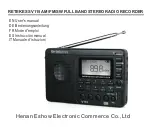
REAL-TIME KINEMATIC (RTK) POSITIONING
Corrections can be transmitted from a base station to a rover
station to improve position accuracy. The base station is the
GNSS receiver which is acting as the stationary reference. It has
a known position and transmits correction messages to the rover
station. The rover station is the GNSS receiver which does not
know its exact position and can receive correction messages
from a base station to calculate differential GNSS positions.
In most cases you need to provide a data link between the base
station and rover station (two NovAtel receivers) in order to
receive corrections. SBAS and L-Band corrections can be
accomplished with one receiver and are exceptions to the base/
rover concept. Generally a link capable of data throughput at a
rate of 9600 bits per second, and less than 4.0 s latency, is
recommended.
Once your base and rover are set up, you can configure them for
RTCM, RTCMV3 or CMR corrections. An RTCM example
follows (replace the latitude, longitude and height coordinates
shown in the FIX command line with those of your base):
Base
interfacemode com2 none rtcm off
fix position 51.11358042 -114.04358013
1059.4105
log com2 rtcm3 ontime 10
log com2 rtcm22 ontime 10 1
log com2 rtcm1819 ontime 1
log com2 rtcm1 ontime 5
Rover
interfacemode com2 rtcm none off
RT-20, with AdVance RTK, is a real-time kinematic software
product developed by NovAtel. Optimal RTK performance is
achieved when both the base and rovers are NovAtel products.
However, AdVance RTK will operate with equipment from other
manufacturers when using RTCM messaging.
RT-20 is supported by GPS-only and GPS+GLONASS models.
Also, RT-20 with GPS+GLONASS provides faster convergence.
Refer to the GPGST log’s usage box in the
OEMV Firmware
Reference Manual
for a definition of RMS and other statistics.
USING THE CAN BUS
A CAN Bus is a serial bus that provides services for processes,
data and network management. There is a CAN Bus capable
model of the SMART-V1 with its own multi-cable. CAN Bus
functionality is controlled through NovAtel’s optional API
software available through Customer Service. The API header
file (*.h), in the API folder after installation, includes
documentation on using the CAN Bus.
POST PROCESSING
Post-mission data processing refers to when the GPS data
collected by the receiver is processed after the entire data-
collection session is complete.
OEMV-based output is compatible with post-processing
software from the Waypoint Products Group, NovAtel Inc. For
details, visit our website at:
http://www.novatel.com/products/waypoint_pps.htm
QUESTIONS OR COMMENTS
If you have any questions or comments regarding your
SMART-V1 or SMART-V1G please contact NovAtel using
one of these methods:
Email:
Web:
www.novatel.com
Phone: 1-800-NOVATEL (U.S. & Canada)
403-295-4900 (International)
© Copyright 2006-2009 NovAtel Inc. All rights reserved.
Printed in Canada on recycled paper. Recyclable.
Unpublished rights reserved under international copyright laws.
GM-14915074
Rev 4
2009/09/22
Quick Start Guide - SMART-V1/SMART-V1G Antenna






















